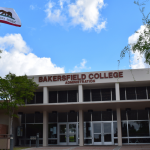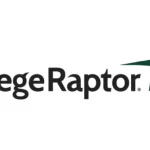As community colleges emerge from the COVID pandemic new challenges around enrollment and retention are emerging. Community college leaders are now tasked with overcoming these challenges and guiding their institutions toward financial stability.
Ocelot recently sat down with Dr. James Catanzaro, a community college president for nearly four decades, to hear his perspectives on how community colleges can navigate the current challenges.
****
Ocelot: How would you characterize the current state of American community colleges?
Dr. Catanzaro: Community colleges are challenged in many novel ways these days because we’re going through unprecedented times. Students, faculty and staff have had to work from home — in isolation, many times using technology with limited training and support.
There were many times over my many years as a college president when we struggled. In fact, every year we were looking over the horizon to see what threats were coming at us. But no one saw the pandemic coming. And, of course, we’re not, even today, in a position to say: “Okay, the dust has settled, we know where we are and where we’re going.” So the overriding question is: How do we successfully navigate in this new milieu?
American community colleges have proven to be the most important innovation in higher education over the past century; and they’ve proven that they are highly adaptable. The movement, I’m convinced, will continue to have a great impact on the future of the United States – in terms of economic growth, social equity, and the well-being of our citizenry.
Ocelot: As you look back at 2020-2021, what were the biggest take-aways?
Dr. Catanzaro: It was a perfect storm. Fatigue has been one unanticipated outcome — for students, faculty, staff, administrators, and even college presidents. I don’t know of any time in the past when college leaders have been in such sustained pitched battles as they’ve been in since Covid-19 arrived on campus – or anytime when they’ve been more successful! Community college people have had their priorities right. We want students when they leave us saying, “This was a fantastic experience. I’m a different person now. I’m on my way to success — the American dream.” This still holds true even in the most difficult of times.
Ocelot: Can you speak more specifically about the efforts you have observed that will pay off in 2022 and beyond?
Dr. Catanzaro: First and foremost, I would start with an overriding focus on student engagement/student success. The two are married together. They form a holistic approach to students. I’m not speaking of completion rates only. Completion outcomes are important, but to me, even more important are measures of competence. Achieving student competence, command of what students have learned, requires a finely prepared faculty and staff, and, especially as we scale up the enterprise and move to remote modalities, the support of technology. Without the many capabilities technology uniquely grants to us, we will miss students in even greater numbers, especially those on the “back row’ who do not feel they belong in the college. Many will drop away, and some who make it to completion will have the paper but not the required skills for career success.
Ocelot: When we look at helping students be successful, we must recognize up front that there are costs to this enterprise. Technology costs.
Dr. Catanzaro: In 2022, in many states, financial support will likely be down even further. We know that, nationwide, per-student state subsidies for community colleges have continuously declined over the past decade or so. In Illinois, for example, the decline from 2008 to 2017 was circa 40%. There was a 50% drop over the same period in Arizona.
How are we going to improve our student success metrics and meet the financial demands of a post-Covid world? Here’s what I think we must do — right from the get-go, shape our conversations with legislators around student engagement and student competence. We all know this: it’s the engaged student who will stay with us; it’s the engaged student who will talk to other potential students and help us with recruitment; it’s the engaged student who will persist to graduation; and, most important to our legislators, it’s the engaged student who will be ready for the workforce. But engagement costs! It requires skilled support staff, pedagogically gifted and trained faculty, and lots of technology. The pay-off is not just for students and the institution, it’s for our communities and states! Legislators will get this.
Covid-19 has disrupted most everything we do, but disruption has given us all a fresh look at available opportunities for improving effectiveness – through faculty and staff development, and through an abundance of technology-support options including data analysis and information sharing. These now can gain campus support because we all can see they are necessary. Recruitment, instruction, student support services, advising, operations, planning, messaging, even individual student security and emotional well-being, all come down to our effectiveness at engagement. And, once again, engagement at scale requires technology. The virus has shown itself to be a relentless force to disengage us, so we have to step up our game. Our obligations are great! We must now help students not only succeed in their studies, but also become resilient emotionally.
Ocelot: With the growth in online and remote learning, how do you see the impact on community colleges, and the challenges when it comes to engaging with students?
Dr. Catanzaro: These challenges have become markedly greater. Many of our faculty simply haven’t developed the skills for successful online and hybrid instruction, synchronous or asynchronous – certainly, not when it comes to engagement! What is required now is continuous engagement. Through webinars, zoom sessions, even virtual board meetings, we all know that we can be “present” but distracted by texts, computer searches, gaming, side conversations as we are muted – quite different from being in those sessions face-to-face. Students can, and do, leave our classes while in class! Learning remotely can actually be remotely learning! Our faculty need evidence-based professional development and an array of technologies to mitigate those lapses in order to ensure learning across the class. Here’s the bad news, fewer than 20% of American colleges and universities have so far made major commitments in funding, staffing and partnerships to address online faculty pedagogical deficiencies.
Students also need special preparation for online and hybrid experiences. Our institutions have not always recognized the value or need for specialized orientations and specialized counseling for online students because they have not always listened to students. They must today. And they must invest in a much greater number of support staff engaged in advising, tutoring, even methodologies such as contextualized learning.
I should immediately note a very positive change reported by college leaders: many faculty who were skeptical about the efficacy of online instruction, now that they have themselves taught online, are saying, “If done right, we can be very successful doing this.” Indeed, it’s reported that in many cases they have found the experience tremendously rewarding. Attitudes have especially shifted when faculty realize that we can engineer, especially in asynchronous instruction, so that in every minute of class time learning occurs. In fact, building a learning community with a lot more personalization, a lot more give-and-take with students, should become the norm. To truly enrich these courses and engage even at-risk students, live audio and video clips of students and faculty, pre-recorded videos, third-party role plays, digital simulations, even use of immersive technology and gaming — all of these and more can be the grabbers that can make for more productive online learning. And all of these tools are available these days through technology!
Ocelot: We look forward to continuing the discussion with Dr. Catanzaro in the next part of our interview.
About Dr. James Catanzaro
Dr. James Catanzaro is a long-standing leader in higher education having served as president of four community colleges in four states for nearly four decades including as president of Chattanooga State Community College for nearly a quarter century.
During those years and for a decade before, Jim taught at least one course per semester – for many years, on-ground, then also online, even hybrid.
Since retiring six years ago, he has served as Executive Director of the Higher Education Research and Development Institute, South, known by the acronym HERDI, South, and as a consultant to several firms in the higher education marketplace. In these roles, Jim regularly speaks with scores of community college leaders about the challenges facing community colleges today.















